
The snack bar (some call it a breakfast bar or a counter for quick snacks) is an increasingly popular design element in contemporary kitchens. A trend that has its roots in the change in family needs – which have been completely transformed in recent years – and in the subsequent evolution of kitchen design.
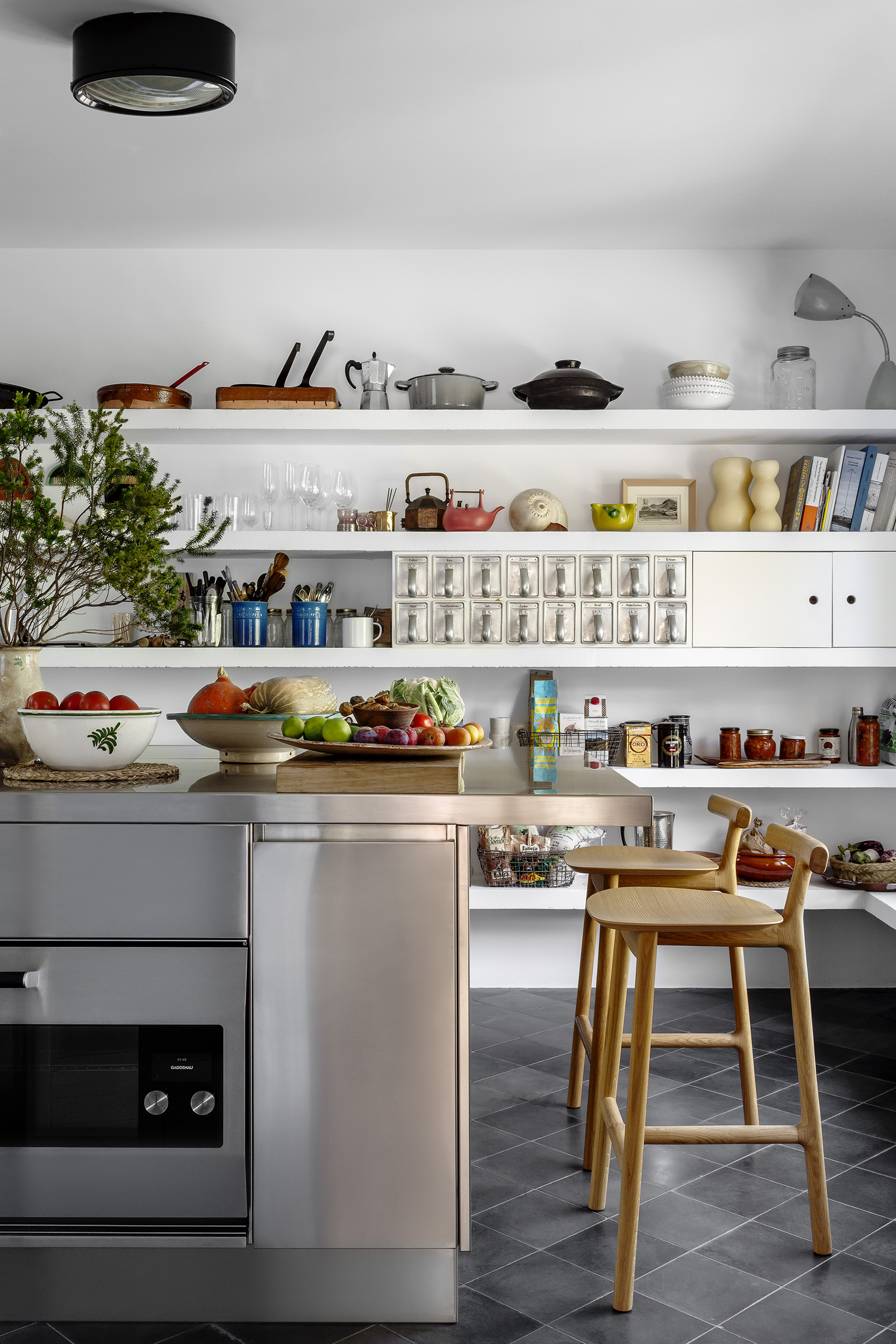
The tendency to equip kitchens with a snack bar is a response to the changing needs, habits and tastes of modern times.
This integrated kitchen top is now a multifunctional area that encourages family conviviality and adds elegance to the design of the kitchen. Its versatility is a style choice for some families but an essential practical solution for many others.
So let’s see how the snack bar trend came about, what its advantages are, and what different functions this solution performs in the daily life of the contemporary family.
How and when was the snack bar born?
The snack bar trend arose in response to the change in family behaviour and the consequent evolution of contemporary domestic environments.
On the one hand, houses are smaller than they used to be, especially in urban centres.
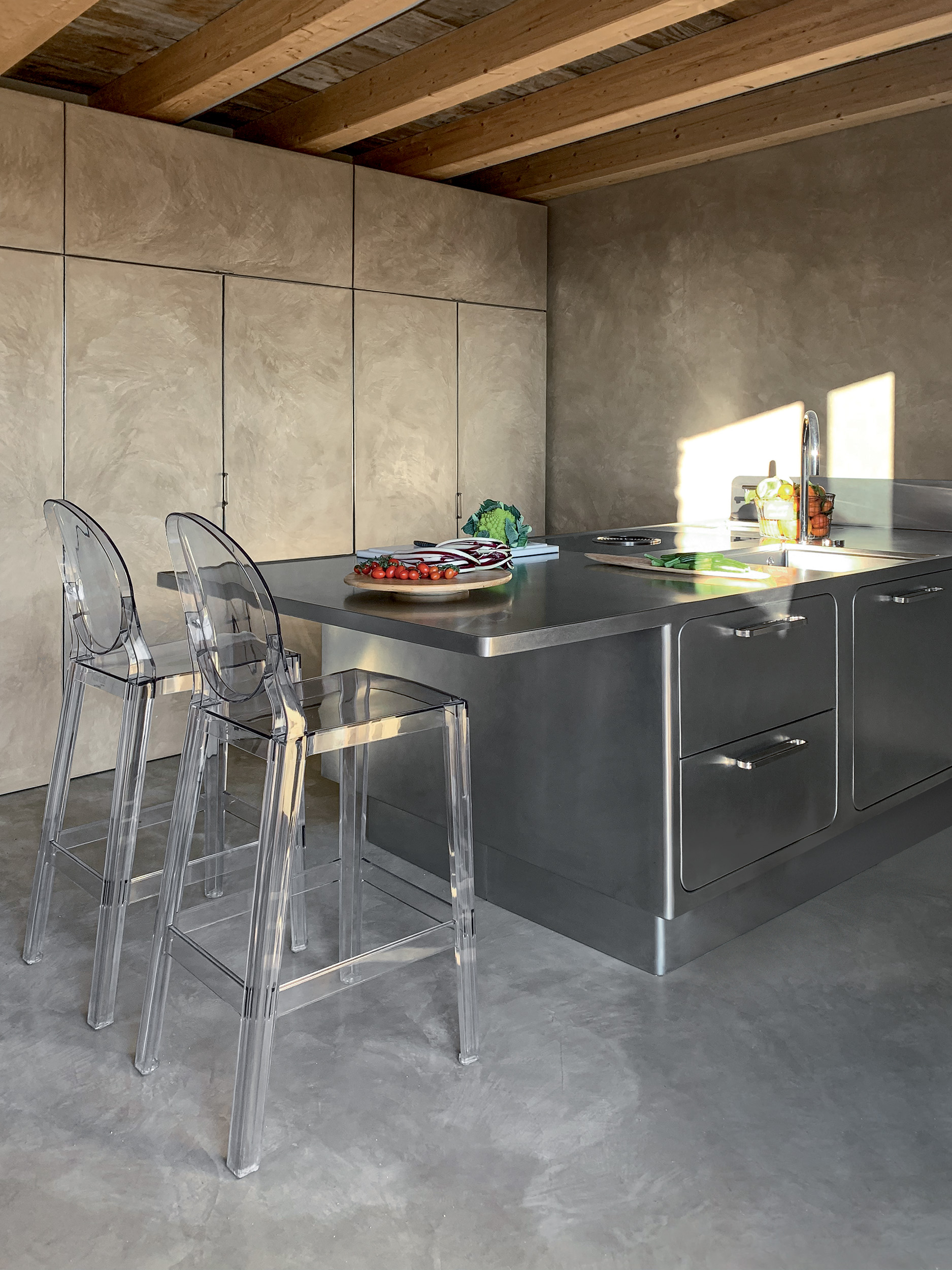
And as a result, kitchen spaces have become more open, fluid and functional.
On the other hand, lifestyles, both at work and at home, have become faster and timings more flexible.
Contemporary kitchens have become the new beating heart of home life, evolving to adapt to changes and accommodate new functions.
These include the snack bar, which offers a flexible and informal space for eating, working or socialising, without having to resort to the dining room or the living room.
There are many advantages of a kitchen with a snack bar.
From a practical point of view, the breakfast-snack bar is a versatile area for a quick breakfast, a casual lunch, an aperitif or a snack. But it is also a practical space for reading, doing homework or working on your laptop or mobile phone.
The snack bar therefore offers modern families more freedom and flexibility in their daily routines. It also helps them save time and adds flexible workspaces to the home. This is why it is particularly popular with dynamic families who are always on the move.
In addition, its design strongly characterises modern kitchens, adding a touch of style to the home.
These tops are usually installed in island or peninsula kitchens. In these cases, the snack-breakfast bar is built into the central island (or peninsula), and creates a focal point in the room.
Most often the snack bar of island or peninsula kitchens serves as an element that separates the kitchen and the living room.

First, because it gives the aesthetics of the island facing the living room more impact. Also because it creates a division between the two environments, but without separating them completely. In fact, it actually encourages greater socialisation among people.
But wall-mounted kitchens can also add a useful snack bar to their standard layout. It is often an extension of the top that takes on the dual function of the snack bar and worktop.
The choice will depend on the available space, the layout of the kitchen and personal preferences.
The choice of materials for the snack bar is essential. Surfaces must be strong and easy to clean. The most commonly used materials are undoubtedly natural ones: wood, stone and steel.
Wood adds a touch of warmth and a strong call to nature, but requires more careful maintenance.
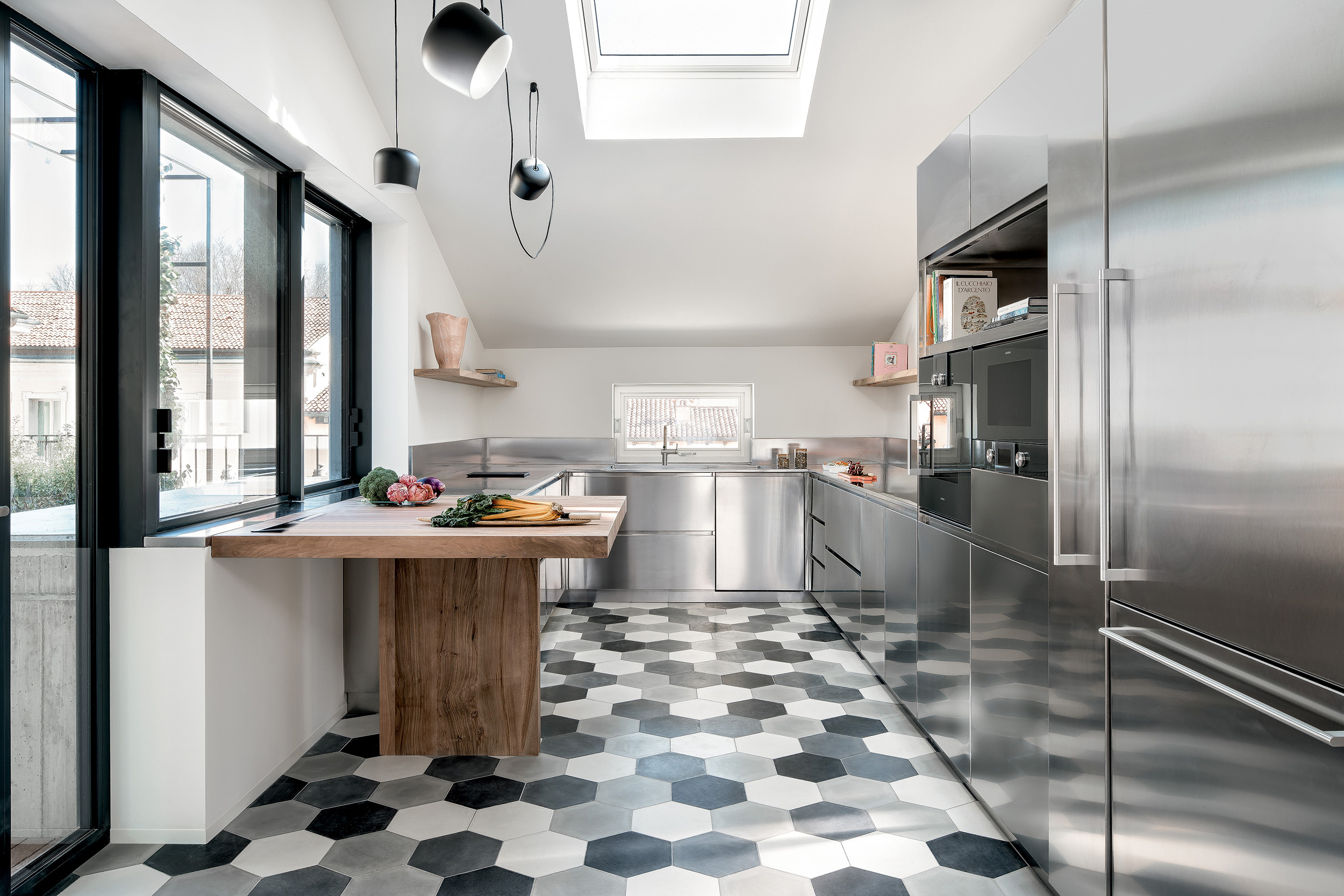
Natural stones, such as marble or granite, lend great elegance to the kitchen but, being porous materials, require special attention to avoid permanent stains.
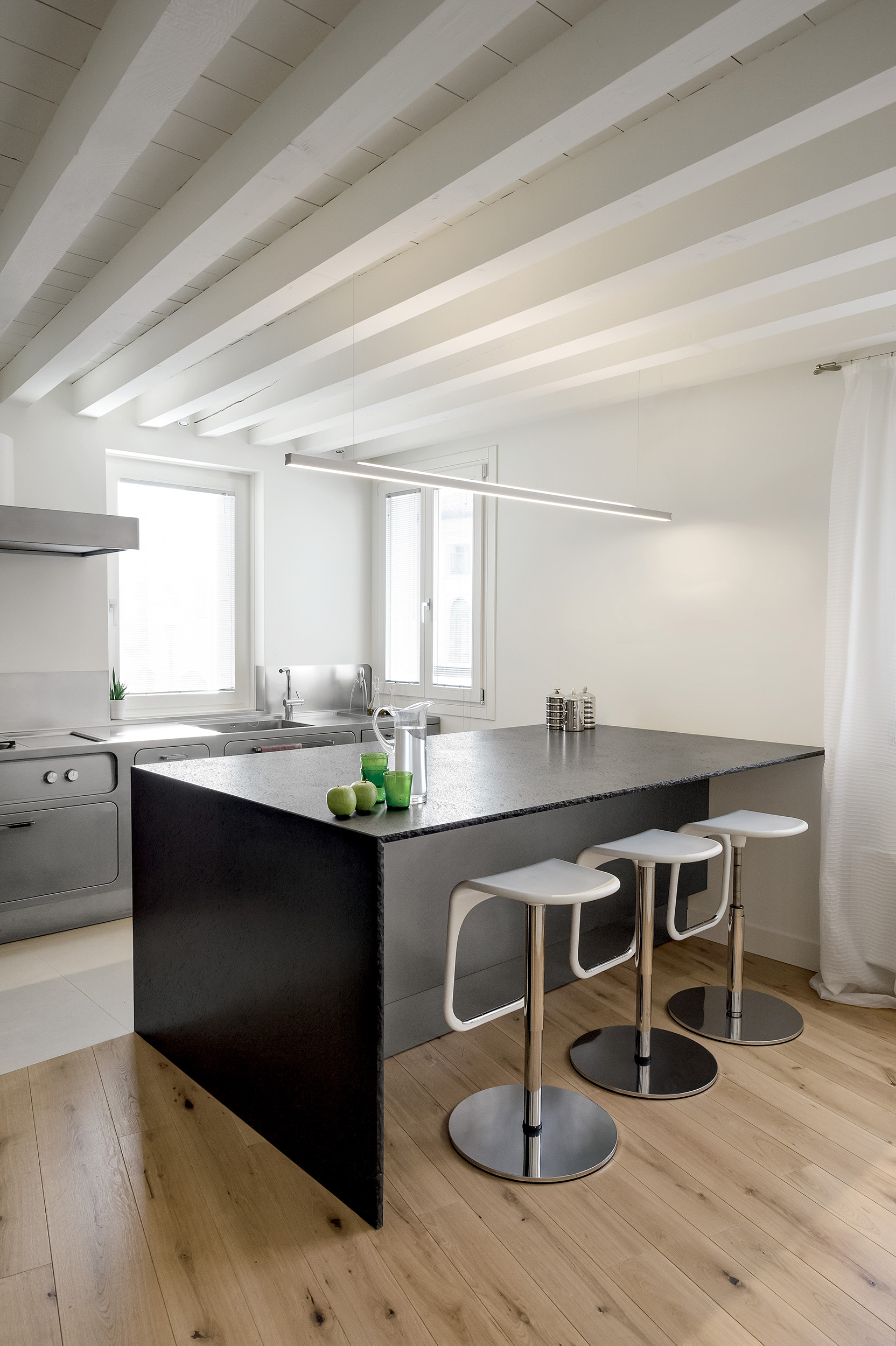
Stainless steel is one of the most popular materials for snack bars.
This is not only for aesthetic reasons. In fact, a steel top adapts perfectly to every material and every colour and gives a touch of design and modernity to kitchens, even the most classic ones.
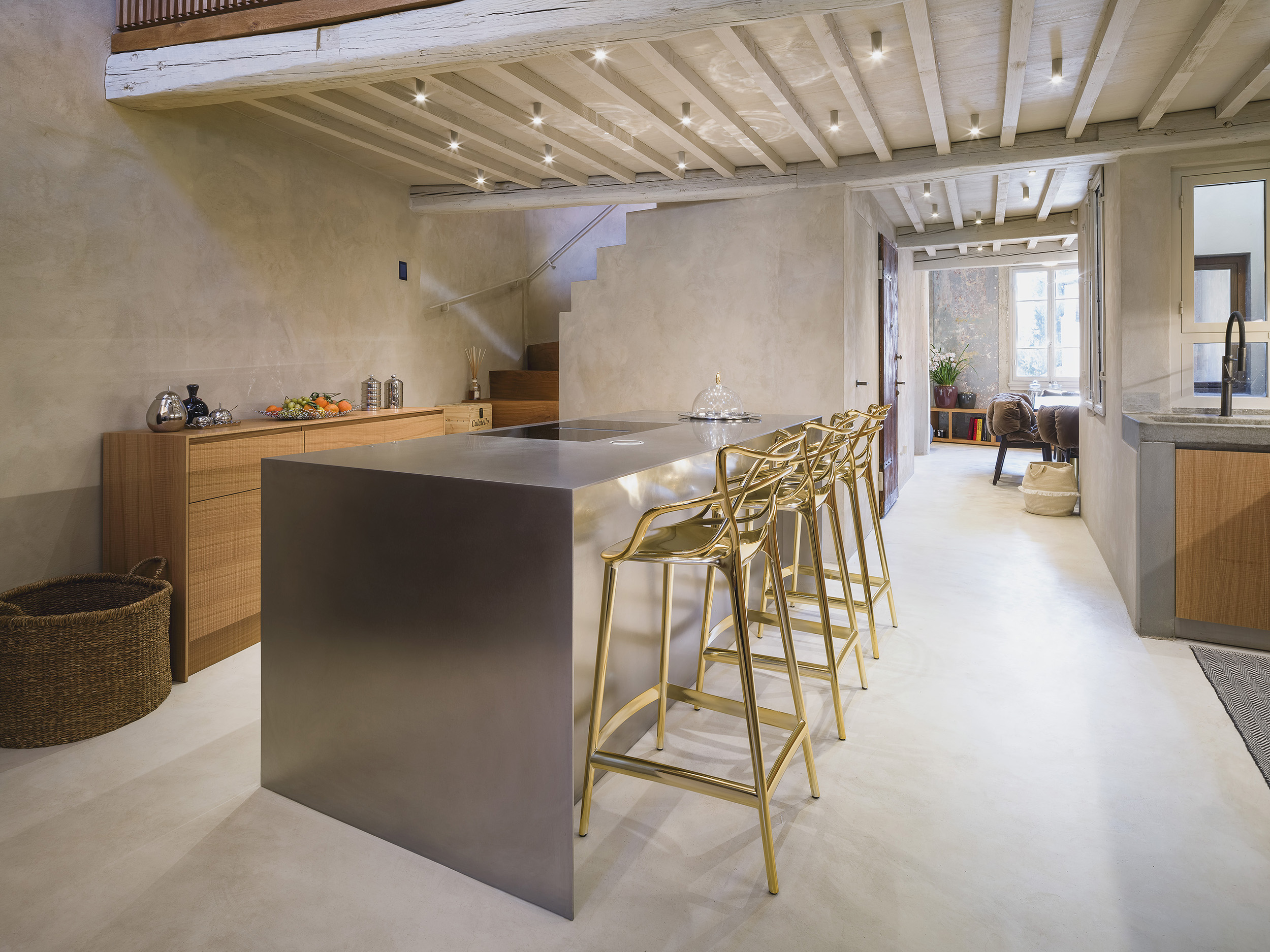
But also and above all because stainless steel is a very strong material, does not absorb liquids, offers a greater ease of cleaning and is naturally antibacterial.
Discover our Article on how to clean stainless steel kitchens
To understand better how useful snack bars can be, let’s try and think about how a normal day of a family with children has changed. Whereas at one time we used to sit down at the table all together 3 times a day – for breakfast, lunch and dinner – things are very different today.
Children and parents often get up at different times and have breakfast independently before going to school or work.
It is also often the case that only one parent is at home for lunch. And for children to come home from school at different times… the ideal solution in these cases is a practical and informal table, (better if it is built into the kitchen) to be set and cleared quickly.
But the day is not over yet… in the afternoon teenagers can sit there to do their homework or work on the PC. And in the evening, when friends come for dinner, the snack bar can become a cosy area for an aperitif and a chat while the adults get things ready in the kitchen.
So, what could be better than a practical and informal breakfast-snack bar in the kitchen?
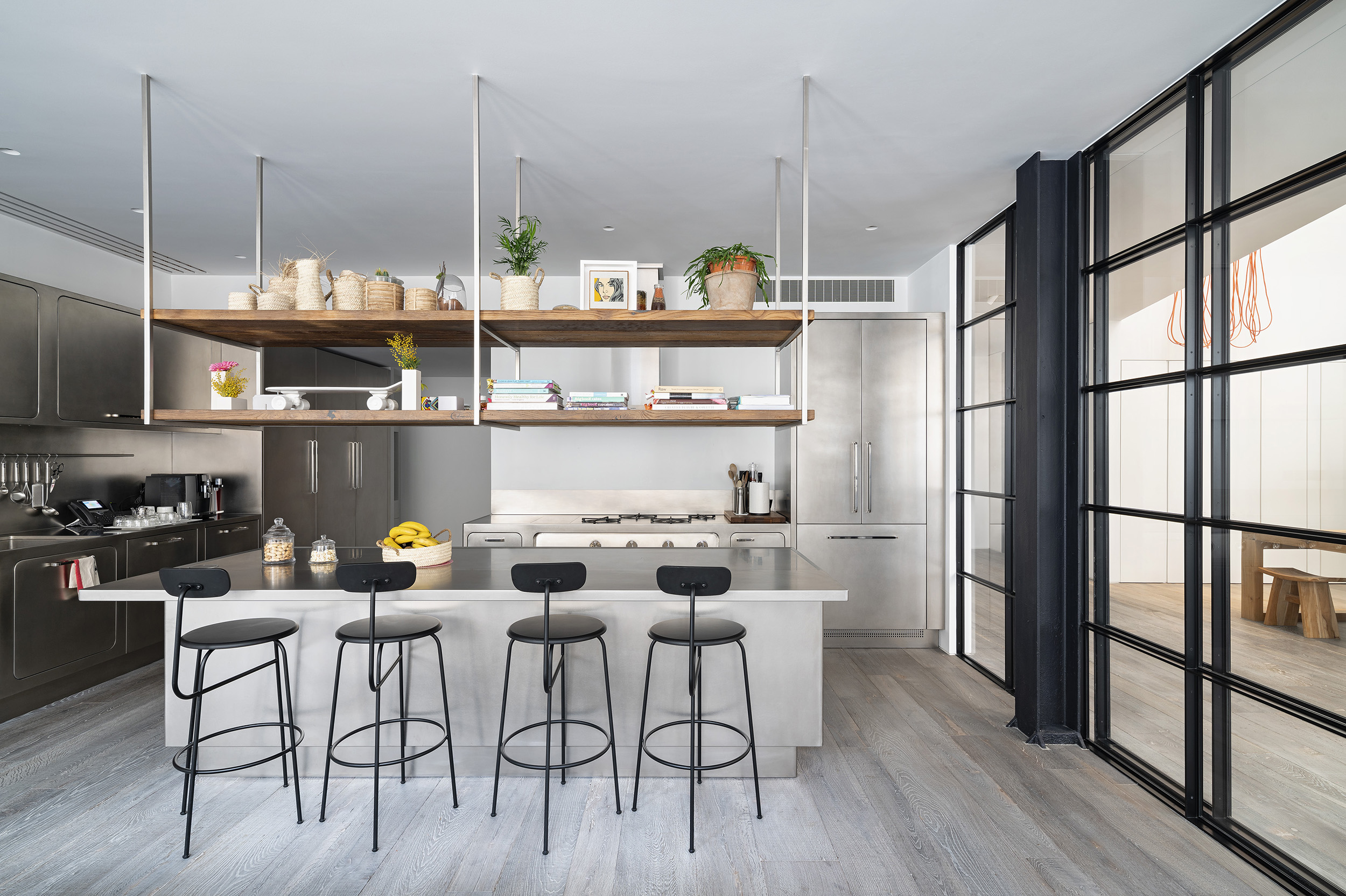
Abimis designer kitchens are all custom-made from the finest stainless steel. This means they can have any configuration and perfectly adapt to everyone’s needs.
Abimis is able to advise designers on the best possible solutions for kitchens with a snack bar or with built-in tables for quick snacks.
Contact us for more information email at info@abimis.com